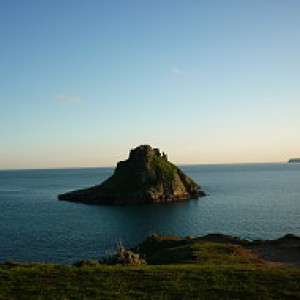Remembering RAF Bolt Head
Wonderful ten mile walk today from Bolberry Down to Salcombe and back via East Soar. At Salcombe we had an exhilarating swim at South Sands.The wind was strong but so warm it felt as if my face was being ironed Just after East Soar we pass the site of RAF Bolt Head. It is still used for light aircraft so you get an idea of what it was like, and on this loveliest of summer days we remembered the men who served here.
There is a hand-written Memorial in Marlborough Parish Church commemorating the men of the RAF who came here from all over the world to defend our country and who gave their lives for us. Only 17 names but their exploits, and those of their comrades who lived, have become part of our history. Remember RAF Bolt Head
In 1940, the harvest was gathered in from the fields on Bolt Head and two runways laid down - nothing elaborate, just coconut matting on top of the soil with metal grids on top - and this hilltop suddenly became an important strategic satellite for the RAF Squadrons stationed at Exeter Airport. To begin with, accommodation consisted of tents but as the war progressed, huts were built for personnel and hangars for planes. Bolt Head provided a useful starting point for raids on France and for protecting the English Channel approaches but it was exposed and vulnerable and official documents record at least 3 Luftwaffe attacks on this airfield.
The wording on the plaque in the car park reads:
"You are standing at the intersection of the two runways of RAF Bolt Head. After the harvest of 1940 the land here was taken over, hedges removed, and runways laid. RAF Bolt Head was operational from 1941 until 1945. RAF Hope Cove, the Ground Control Interceptor Station, (GCI) was established in 1941 to direct fighter operations in this sector of the English Channel."
"RAF Bolt Head was built as a satellite station to Exeter. It had two Sommerfeld track runways 2700ft long, which were later extended to 3600ft and 4200ft. These consisted of coconut matting laid on the fields with metal grids on top. The station was originally used for fighters of 10 and 11 group to escort bombers. The clifftop site allowed fighters the maximum range for these sorties into France. Later, in the build up to D Day, Spitfires and Typhoons by day and Mosquitoes and Beaufighters by night, used the station for raids across the Channel. It was also a base for Air Sea Rescue using Lysanders, Spitfires and Walruses. At first the personnel were under canvas but as the war progressed facilities improved with huts and hangars being built"

Comments
Sign in or get an account to comment.


